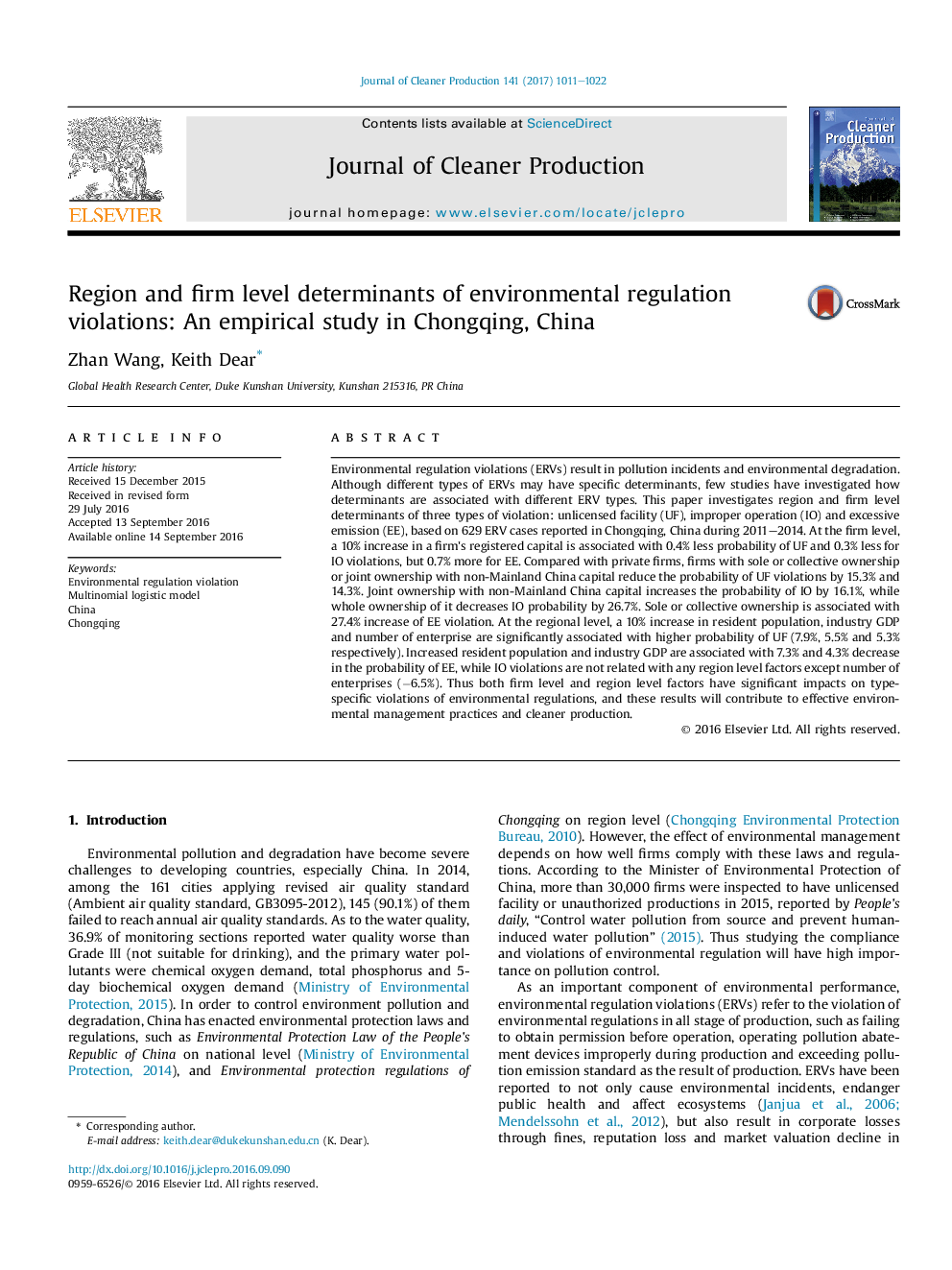| Article ID | Journal | Published Year | Pages | File Type |
|---|---|---|---|---|
| 5481752 | Journal of Cleaner Production | 2017 | 12 Pages |
Abstract
Environmental regulation violations (ERVs) result in pollution incidents and environmental degradation. Although different types of ERVs may have specific determinants, few studies have investigated how determinants are associated with different ERV types. This paper investigates region and firm level determinants of three types of violation: unlicensed facility (UF), improper operation (IO) and excessive emission (EE), based on 629 ERV cases reported in Chongqing, China during 2011-2014. At the firm level, a 10% increase in a firm's registered capital is associated with 0.4% less probability of UF and 0.3% less for IO violations, but 0.7% more for EE. Compared with private firms, firms with sole or collective ownership or joint ownership with non-Mainland China capital reduce the probability of UF violations by 15.3% and 14.3%. Joint ownership with non-Mainland China capital increases the probability of IO by 16.1%, while whole ownership of it decreases IO probability by 26.7%. Sole or collective ownership is associated with 27.4% increase of EE violation. At the regional level, a 10% increase in resident population, industry GDP and number of enterprise are significantly associated with higher probability of UF (7.9%, 5.5% and 5.3% respectively). Increased resident population and industry GDP are associated with 7.3% and 4.3% decrease in the probability of EE, while IO violations are not related with any region level factors except number of enterprises (â6.5%). Thus both firm level and region level factors have significant impacts on type-specific violations of environmental regulations, and these results will contribute to effective environmental management practices and cleaner production.
Related Topics
Physical Sciences and Engineering
Energy
Renewable Energy, Sustainability and the Environment
Authors
Zhan Wang, Keith Dear,
